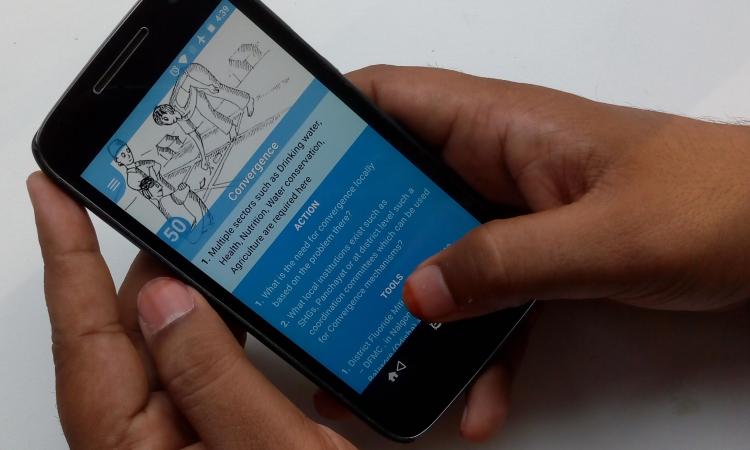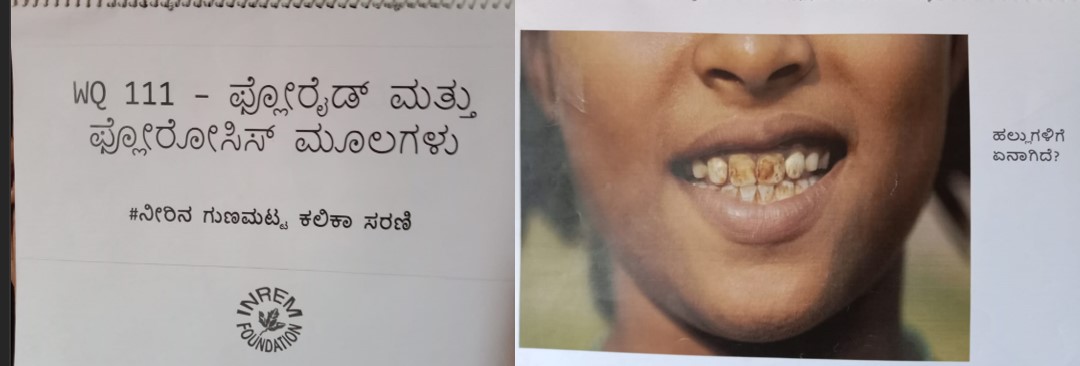
Our drinking water is fraught with quality issues like chemicals, microplastics, excessive minerals, bacteria, and other contaminants, which tend to be local in nature, and require mitigation action at the local level. Frontline workers in these localities require an understanding of how to assess the local water quality and what steps to take to address issues that are discovered in water. This requires capacity building and availability of simplified information on water quality problems and solutions.
INREM Foundation works to empower field functionaries from government and non-government institutions with knowledge and capacities to enable them to find solutions to water quality problems in their area. Doing this has meant exploring innovations in training and learning methods. We will explain some of them in this article.
Reusable Learning Objects
Water quality is a vast subject and can often be complex in nature. Hence, simplifying the information and breaking it down into the smallest bits possible is critical to the knowledge dissemination process. This ensures that learners’ needs are prioritised and they are not overwhelmed in the learning process.
To achieve this, INREM follows a concept of reusable learning objects (RLO) to design its content. We focus on understanding the audience and their needs when creating content for them. The safe water learning cards, which have found immense popularity in water quality training across the country, have been developed using this approach.
Characteristics of RLOs
The different characteristics of RLOs in the context of training of frontline workers on water quality are described below.
1. Learner-centric: Frontline workers working on water management have different skills and learning needs in different places. Hence, the content designed for them must take into account their existing knowledge, local context, and the medium of comfort for the learners. For instance, for the watermen in Karnataka i.e. Jalagara, the training material on basics of water quality and field testing was made in the form of flipcharts in Kannada language.


2. Atomised: Complex topics need to be broken down into simple concepts and practicable solutions to make it easier for the frontline workers to understand. Each content piece must be bite-sized to ensure that learners can grasp the concepts one at a time without getting overwhelmed. The safe water learning cards targeted at frontline workers are a good example of how to build foundational knowledge on water quality management with bite-sized small units of learning.

3. Flexible and customisable: Just like how we customise vanilla ice cream with different toppings to suit our preferences, content created should allow for easy customisation. This enhances reusability of the training content and saves time and resources. For example, the training material used for building capacities of health workers under the National Program for Prevention and Control of Fluorosis (NPPCF) was adapted and reused in different districts. Three modules developed on Integrated Fluorosis Management (IFM) for one district in Rajasthan were adapted to the local context and data so they could be used in different districts. You can check the content for IFM here. Some slides about fluorosis mitigation were retained while the rest modified depending on the districts and their issues.

4. Modular:- Making training content modular provides the flexibility to fit parts together depending on the learner and their learning needs without having to re-create content from the start. For the water quality management course, we built the content on basics of water quality and field-based water quality testing using Safe Water Learning Cards and existing modules from the frontline workers’ training material. The content was re-used and incorporated into a larger learning module. Sample content can be seen here.
5. Interactive: Elements like teaser questions, quizzes, assessments, polls are an integral part in designing the online training modules. The training content is designed in a way that stimulates participant’s thinking and allows for introspection of their field observations and experiences. We used several of these in all water quality training sessions to make them interactive for the participants.
6. Accessible and shareable at scale: Content created in digital formats allow for easy sharing to any number of users. When participants are trained in cohorts from different districts of India, the content pieces are made accessible to all the participants at once using digital platforms like Participatory Digital Attestation (PDA) or through the water quality network portal. They can further share the pieces with their peers and others through applications like Whatsapp. This creates a fluidity of knowledge even beyond the training cohorts. The table below shows the number of times participants have viewed and downloaded content from the training modules for a period of 1.5 years.
| Number of modules | 9 |
| Number of training sessions | 257 |
| Content views | 2900 |
| Content downloads | 4760 |
| Content shared outside the app | 299 |
Based on our experiences, here is a summary of tips for making online content for training of frontline workers:
● Create modular and customizable content that can be used anywhere in the country
● Use virtual field demos, videos, case studies depending on the learners’ needs
● Publish the content online and make it available to everyone
● Use photos with creative commons license
● Acknowledge and give credit to people who contribute content, photos, videos, etc.
By simplifying information it can be used to explain complex, interconnected topics related to water quality such as climate change. Further, innovative approaches like gamification, graphic novels and newer technologies are being explored to make virtual learning not only engaging but also scalable.
/articles/building-content-water-quality-scale